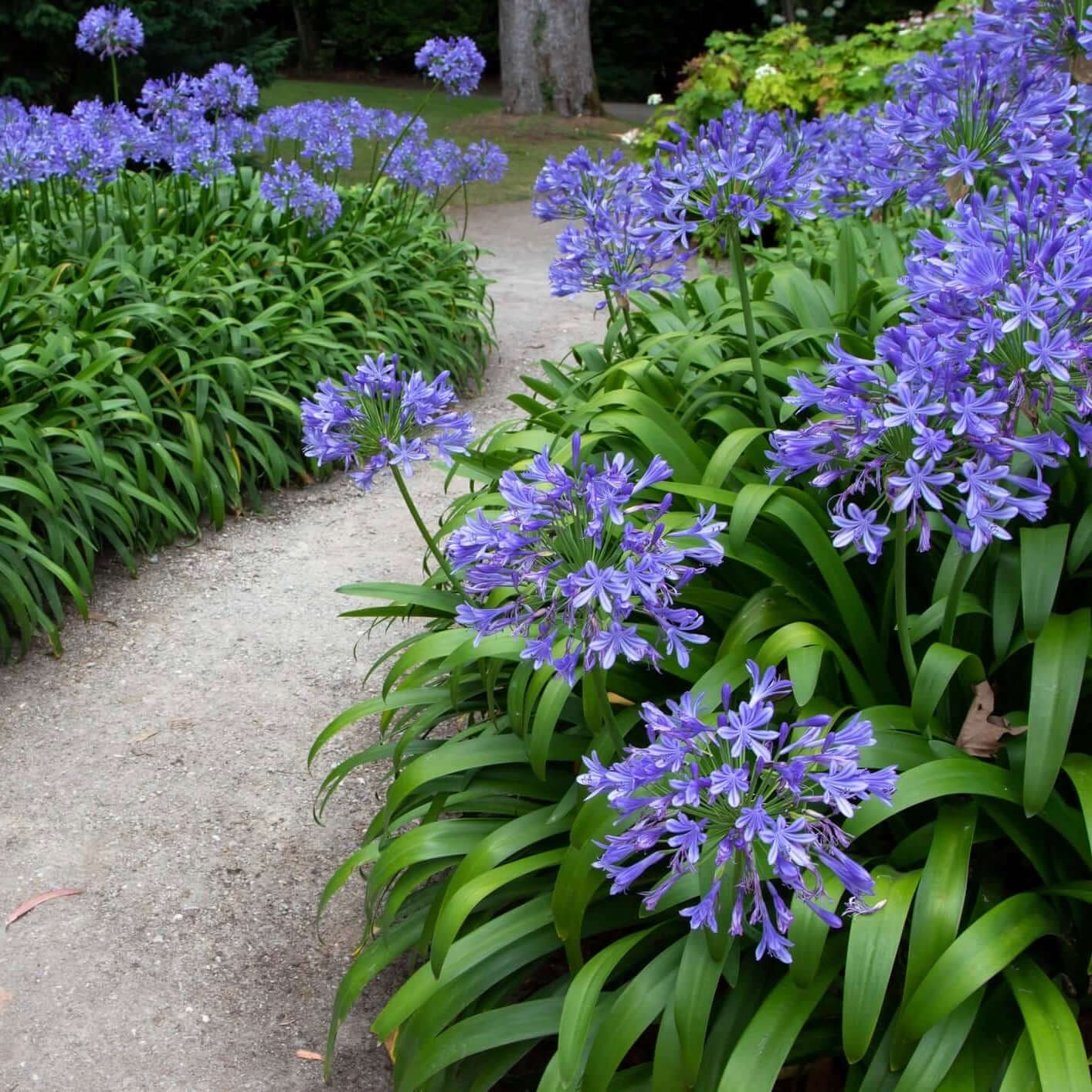Expanding Agapanthus: A Full Guide to Beautiful Blooms
Expanding Agapanthus: A Full Guide to Beautiful Blooms
Blog Article
Mastering the Art of Agapanthus Treatment: Vital Steps for Healthy And Balanced Development and Lively Blossoms
In the world of cultivation, the cultivation of agapanthus stands as a rewarding undertaking for those that seek to nurture these sophisticated flowering plants. From picking the best selection to mastering pruning methods, the journey in the direction of growing flourishing agapanthus plants is complex and holds the vital to opening the complete potential of these botanical gems.

Selecting the Right Agapanthus Selection

When selecting the best Agapanthus range for your garden, consider variables such as environment viability, blossom color, and development practice. Furthermore, think about the environment in your area to guarantee the Agapanthus selection you select can thrive in your details conditions. Understanding the growth habit of various Agapanthus ranges is vital for correct placement within your yard.
Ideal Growing Conditions
Thinking about the ideal environmental demands is necessary for successful Agapanthus growing. Agapanthus flourishes in well-draining soil with a somewhat acidic to neutral pH level. When planting, pick an area that gets full sunlight to partial color. In hotter climates, supplying some afternoon shade can protect against scorching of the leaves. Agapanthus plants are delicate to cool temperature levels and must be secured from frost throughout winter season.
To make certain healthy and balanced development and dynamic blooms, plant Agapanthus bulbs at a deepness of concerning 2-4 inches and area them 8-12 inches apart. Mulching around the base of the plants helps preserve moisture and subdues weed growth.
Watering and Fertilizing Tips
Keeping correct dampness degrees and providing essential nutrients are key elements in the treatment program for Agapanthus plants. When it concerns sprinkling Agapanthus, it is vital to strike an equilibrium. If overwatered, these plants prefer constantly moist soil however are vulnerable to root rot. Throughout the growing period, water deeply when a week, ensuring the soil is well-draining to prevent waterlogging. In hotter climates or during periods of drought, even more frequent watering may be essential to keep the soil uniformly moist. However, minimize watering in the winter months to stop waterlogged conditions.
Fertilizing Agapanthus is crucial for advertising healthy development and prolific flowers. Apply a balanced plant food, such as a 10-10-10 formula, in the very early click this site springtime as brand-new development arises. By adhering to these watering and fertilizing pointers, you can ensure your Agapanthus plants thrive and produce vibrant, lasting blossoms.
Trimming Strategies for Agapanthus
Trimming Agapanthus plants at the proper times and with appropriate methods is vital for keeping their wellness and promoting optimal development and flowering. The optimal time to prune Agapanthus is in late winter months or very early springtime before new growth emerges. Begin by eliminating any yellowing or dead leaves near the base of the plant. Cut them as close to the ground official website as possible without damaging the arising shoots.
For flowered stems, wait up until the blossoms have withered click this and then cut them back to the base. This not just cleans up the plant's look however additionally urges the development of new flower buds. Deadheading invested flowers can likewise redirect the plant's energy right into producing even more blooms as opposed to establishing seeds. Nevertheless, if you desire to gather seeds for propagation, leave some blossoms to fully grown and dry on the plant.
Keep in mind to make use of clean, sharp tools to make specific cuts and decrease the risk of introducing conditions. Agapanthus. Regular trimming will certainly aid keep your Agapanthus looking healthy and balanced and neat while making sure a bountiful display screen of stunning blossoms
Dealing With Typical Pests and Diseases
After ensuring proper trimming techniques for Agapanthus, it is essential to resolve usual parasites and illness that can influence the wellness and vigor of these plants. One typical insect that affects Agapanthus is the Agapanthus gall midge.
Furthermore, Agapanthus plants can experience from origin rot if they are planted in improperly draining pipes soil. By being watchful and taking punctual action versus parasites and illness, you can aid your Agapanthus plants prosper and create lively flowers. Agapanthus.

Conclusion
In final thought, understanding the art of agapanthus treatment entails selecting the right variety, offering excellent planting problems, correct watering and feeding, ideal trimming techniques, and resolving usual parasites and conditions. By complying with these necessary steps, you can make sure healthy and balanced growth and vivid blooms for your agapanthus plants. Bear in mind to consistently keep track of and keep your plants to advertise their overall well-being and longevity.
To guarantee healthy and balanced development and vibrant blooms, plant Agapanthus bulbs at a depth of about 2-4 inches and area them 8-12 inches apart. By complying with these watering and feeding ideas, you can guarantee your Agapanthus plants thrive and produce dynamic, lasting flowers.
One typical parasite that impacts Agapanthus is the Agapanthus gall midget. In addition, Agapanthus plants can endure from origin rot if they are planted in inadequately draining pipes dirt. By complying with these important actions, you can make sure healthy development and vibrant blossoms for your agapanthus plants.
Report this page